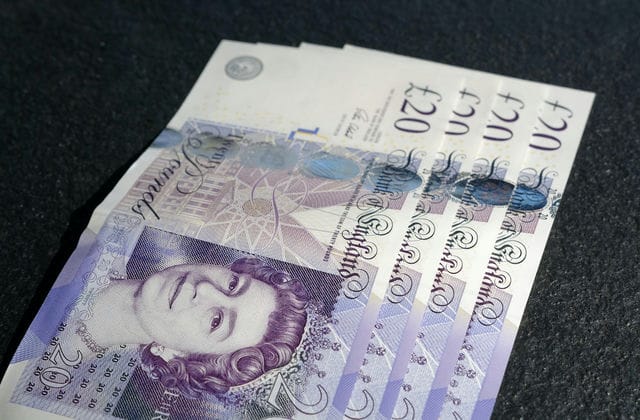Basic banking businesses generally include savings, loans, bank cards, electronic banking and bank financial products
1、Savings business
A deposit activity in which urban and rural residents deposit their temporarily unused or surplus monetary income into banks or other financial institutions. It is also called savings deposit. Savings deposits are an important source of funds for credit institutions. The development of savings business can, to a certain extent, promote the adjustment of the proportion and structure of the national economy, gather funds for economic construction, stabilize market prices, regulate the circulation of money, guide consumption, and help the masses arrange their lives. Different from China, the common concept of savings in western economics is that savings is the part of monetary income that has not been used for consumption. This kind of savings includes not only personal savings, but also corporate savings and government savings. Savings include deposits in banks, securities purchased and cash in hand.

2.、Loan business
A form of credit activity in which a bank or other financial institution lends monetary capital at a certain interest rate and on the condition that it must be returned. In a broad sense, loans refer to loans, discounts, overdrafts and other loans. The centralized currency and monetary capital invested by banks through loans can meet the needs of the society to expand reproduction for supplementary funds and promote economic development; At the same time, banks can also obtain loan interest income from this, increasing their own accumulation.

3、 Bank card
A bank card is a plastic card issued by a commercial bank with the functions of withdrawal, consumption and transfer. The size of the bank card is generally 85.60 × 53.98 mm(3.370 × 2.125 inches), but there are also mini cards 43% smaller than ordinary cards and irregular shaped cards.
Stored value cards are unregistered and do not report losses. They are generally used for small payment.
Quasi credit cards need to deposit a certain amount of petty cash, and there is no interest free period after overdraft. Quasi credit cards seem to be unique to Chinese Mainland and are now uncommon.
The credit card does not need to deposit the petty cash in advance. It needs to consume before repaying. Generally, it has an interest free period of 20-60 days. The credit card shall repay at least 10% of the bill amount every month, and the balance can be returned later with interest.
Charge card is similar to credit card, but there is no revolving credit. The monthly bill amount must be paid in full. The limit of charge card is usually much higher than that of credit card, and its annual fee and card issuing standard are also higher than that of credit card.
Strictly speaking, charge cards are not bank cards. Because charge cards are generally issued by non bank financial institutions, such as American Express Travel Related Services or Diners Club.
Co Brand card is a bank card jointly issued by banks and for-profit commercial institutions, such as shopping malls or airlines. The cardholders of the co brand card can enjoy certain privileges of the co brand institution.
Affinity card is a bank card jointly issued by banks and non-profit organizations, such as Hope Project. Cooperative institutions can receive donations from the cardholders' purchase and consumption transactions in a certain proportion.

4、 E-banking
Meaning of electronic banking
E-Bank, also known as online banking, is a virtual bank counter on the Internet.
Current basic organizational form of domestic online banking
Online payment requires electronic finance, and the establishment of E-Bank has become a general trend.
First, the head office of a bank provides a unified website, and all transactions are completed by the server of the head office. The branch is only responsible for accepting on-site account opening applications and issuing relevant software and hardware;
Second, each branch has its own website and is connected to each other. All customer transactions are completed by the local server. The data is connected to the head office through the bank's internal network, and the head office transmits the relevant data to the servers of other branches to complete the transaction process.
The first model is represented by ICBC [- 0.25% fund research report], Bank of China [- 0.31% fund research report] and CITIC Industrial Bank; The second mode was adopted by CCB and China Merchants Bank [0.13% fund research report].

5、 Bank financial products
Bank financial products are a kind of financial products designed and issued by commercial banks themselves. The funds raised will be invested in relevant financial markets and purchased relevant financial products according to the product contract. After obtaining investment income, they will be distributed to investors according to the contract.
Yield: for example, whether the yield in the advertisement is annual or cumulative; Whether the product is subject to withholding tax, and whether the rate of return in the advertisement is the pre tax rate of return or the actual rate of return.
Investment direction: The market in which the funds raised by RMB wealth management products will be put and the specific financial products to be invested determine the size of the product's own risk and whether the yield can be realized.
Liquidity: The liquidity of most products is low, and customers generally cannot terminate contracts in advance. A small number of products can be terminated or pledged, but the handling fees or interest on pledged loans are high.
Linkage expectation: if it is a linkage product, the performance of the linked market or product should be analyzed, whether the linkage direction and range are consistent with the current market expectation, and whether it is possible to achieve.





























